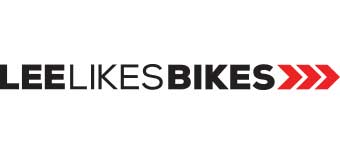Mark Weir on forks
I recently had a wide-ranging email conversation with our hero Mark Weir, and I thought I’d report the major findings:
 Weir grimaces at the Winter Park Enduro. Photo snagged from bikemag.com. |
36 or 32 mm stanchions?
36 all the way. The only time he runs 32 mm forks is for cross-county style courses, and when he has to use the same bike for multiple courses.
Coil or air?
Coil.
“I mostly ride the 36 Van. I only ride a 32 when I’m racing XC or enduros that call for it. The 36 gives me way more confidence when heading into the unknown at speed. It also gives you a more stable late braking platform with a degree slacker head angle and a soft top stroke of the shock when running a coil. Like your front tire grips better because of a more supple feel from the coil. It seems the coil has much better range with the high an low speed adjustment than an air fork.”
“Right now we are in Chico at the Bidwell Bump. Running a 32mm fork only because the XC and DH are one-bike format like D-ville. The enduro here is rough, and I sure wish I brought my 36. But I don’t want to lug that weight around on the xc. The 32 air feels really flexy. I have a hard time holding lines in anything with a heavy loaded front end. Under heavy braking it feels more chattery than the 36, like its catching and loosing traction while it loads up with traction and then slips because of flex. If you get what I mean.”
What about all those compression adjustments on your 36 Van?
For pinning it on a track he knows, 10 clicks of low- and high-speed compression. This makes the bike firm, and he only uses the travel if he needs it.
For slow riding, like when he’s learning a new course, he runs the low- and high-speed wide open. The bike is less likely to ping off rocks, and it’s easier on his hands.
Does geometry matter?
Yes.
“I think if you are going 32 try a coil. Best of both worlds. Also if you throw in a AngleSet headset you would be dialed with the 32. Get the head angle to 66 or so and that’s what really makes a great trail bike. It is not just about more travel.”
How was the Winter Park Enduro?
The race was fun. Hope next year they can use more natural style trail. It was so park style that it gets a bit redundant with all the berms and jumps. Also makes it hard for people to learn five courses in one day of practice when all the tracks feel the same and look the same. So locals have such a big advantage. I guess that’s the bonus of being local, I know that as much as anyone [as multi-time winner of Downieville -Lee]. Also the elevation was hell. So high up for us sea level guys.
What about setup for enduro races?
“I ran a 36 Van in Winter Park. The 32 fork is not my favorite. I would rather have courses that make the big fork a must. It seems most enduro style races in the USA are still heavily weighted toward the more XC style all-mountain bike. It’s the opposite in Europe. You would snap a 32 off trying to ride a true enduro course.”
“That’s enduro. It’s the great unknown on set up. Heavy or lighter tires, light wheels, air or coil suspension, big or small rotors, slack or more steep head angles, you just never know till you go. That’s the part I like. You have to be on top of your setup and know where you the pilot excels the most. Knowing your riding style is the biggest thing. Riding fast where you know you can and bringing it back a couple of clicks in the places you don’t feel as good. In the longer Enduros, it’s less about making it through the course and more about staying fast and avoiding time penalties.”
As of this writing, Mark is sitting in 3rd place in the Trans-Provence enduro. As someone who raced Mark in sport downhill (and on his pump track), I am stoked to see him mixing it up with Vouilloz and crew.
Rip it up Mark!
Know more. Have more fun!
Join the leelikesbikes mailing list:

Comments are closed.